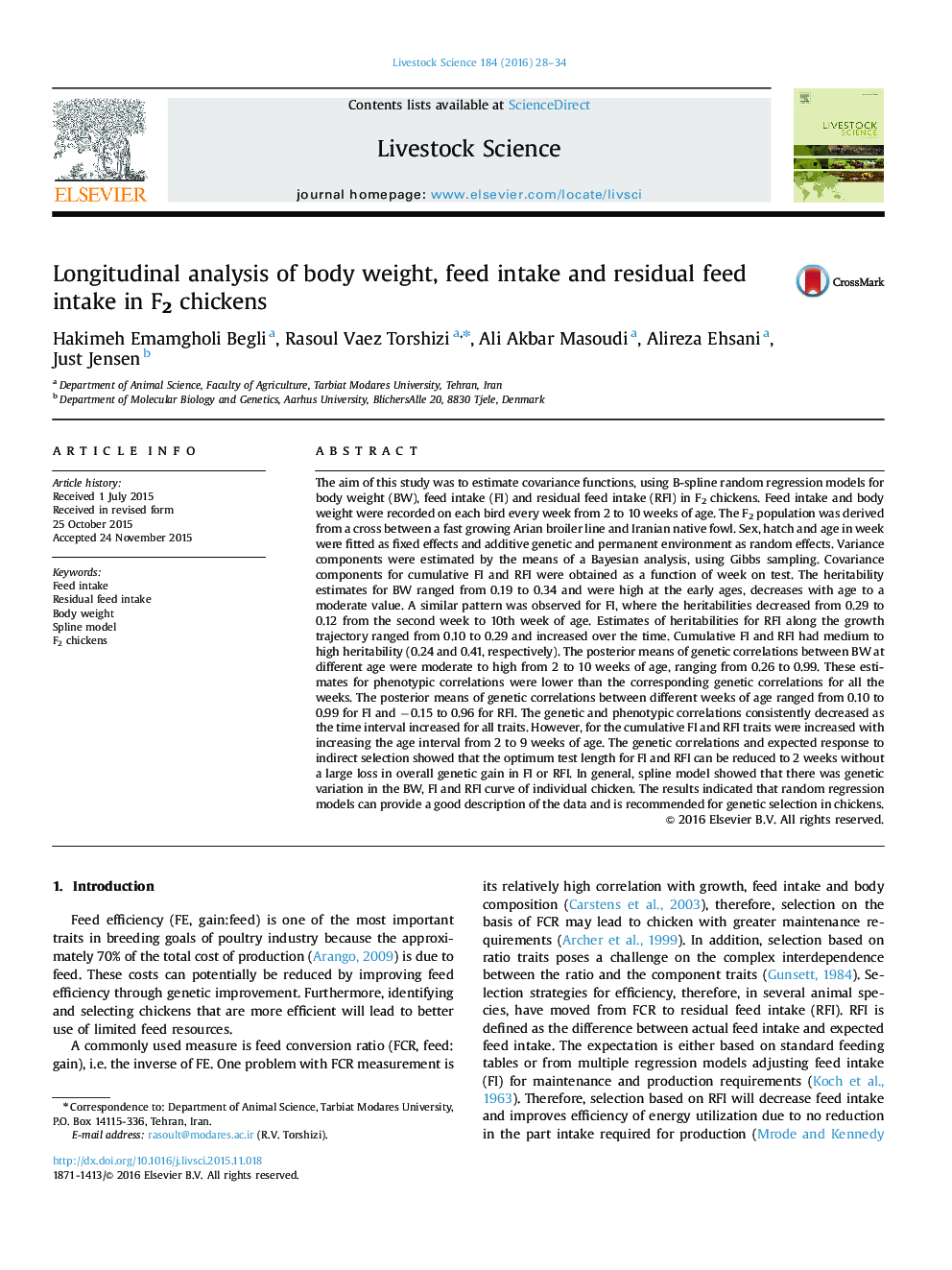| کد مقاله | کد نشریه | سال انتشار | مقاله انگلیسی | نسخه تمام متن |
|---|---|---|---|---|
| 2446969 | 1553948 | 2016 | 7 صفحه PDF | دانلود رایگان |

• Estimation of covariance functions, using B-spline random regression models for body weight, feed intake and residual feed intake in F2 chickens.
• RRM for performance traits in chickens. Reducing test length for RFI to 2 weeks.
• The optimum test length for feed intake and residual feed intake can be reduced to 2 weeks.
The aim of this study was to estimate covariance functions, using B-spline random regression models for body weight (BW), feed intake (FI) and residual feed intake (RFI) in F2 chickens. Feed intake and body weight were recorded on each bird every week from 2 to 10 weeks of age. The F2 population was derived from a cross between a fast growing Arian broiler line and Iranian native fowl. Sex, hatch and age in week were fitted as fixed effects and additive genetic and permanent environment as random effects. Variance components were estimated by the means of a Bayesian analysis, using Gibbs sampling. Covariance components for cumulative FI and RFI were obtained as a function of week on test. The heritability estimates for BW ranged from 0.19 to 0.34 and were high at the early ages, decreases with age to a moderate value. A similar pattern was observed for FI, where the heritabilities decreased from 0.29 to 0.12 from the second week to 10th week of age. Estimates of heritabilities for RFI along the growth trajectory ranged from 0.10 to 0.29 and increased over the time. Cumulative FI and RFI had medium to high heritability (0.24 and 0.41, respectively). The posterior means of genetic correlations between BW at different age were moderate to high from 2 to 10 weeks of age, ranging from 0.26 to 0.99. These estimates for phenotypic correlations were lower than the corresponding genetic correlations for all the weeks. The posterior means of genetic correlations between different weeks of age ranged from 0.10 to 0.99 for FI and −0.15 to 0.96 for RFI. The genetic and phenotypic correlations consistently decreased as the time interval increased for all traits. However, for the cumulative FI and RFI traits were increased with increasing the age interval from 2 to 9 weeks of age. The genetic correlations and expected response to indirect selection showed that the optimum test length for FI and RFI can be reduced to 2 weeks without a large loss in overall genetic gain in FI or RFI. In general, spline model showed that there was genetic variation in the BW, FI and RFI curve of individual chicken. The results indicated that random regression models can provide a good description of the data and is recommended for genetic selection in chickens.
Journal: Livestock Science - Volume 184, February 2016, Pages 28–34